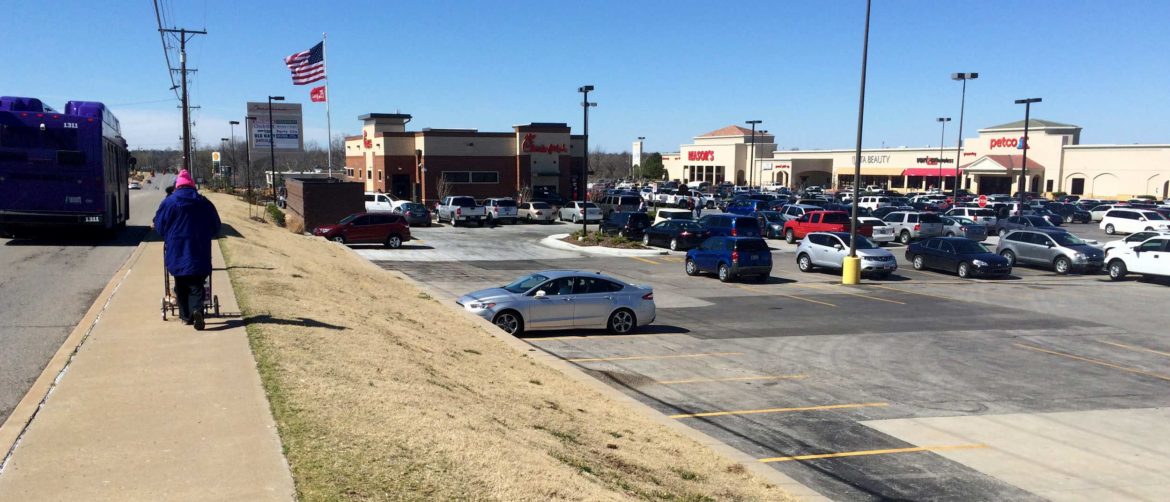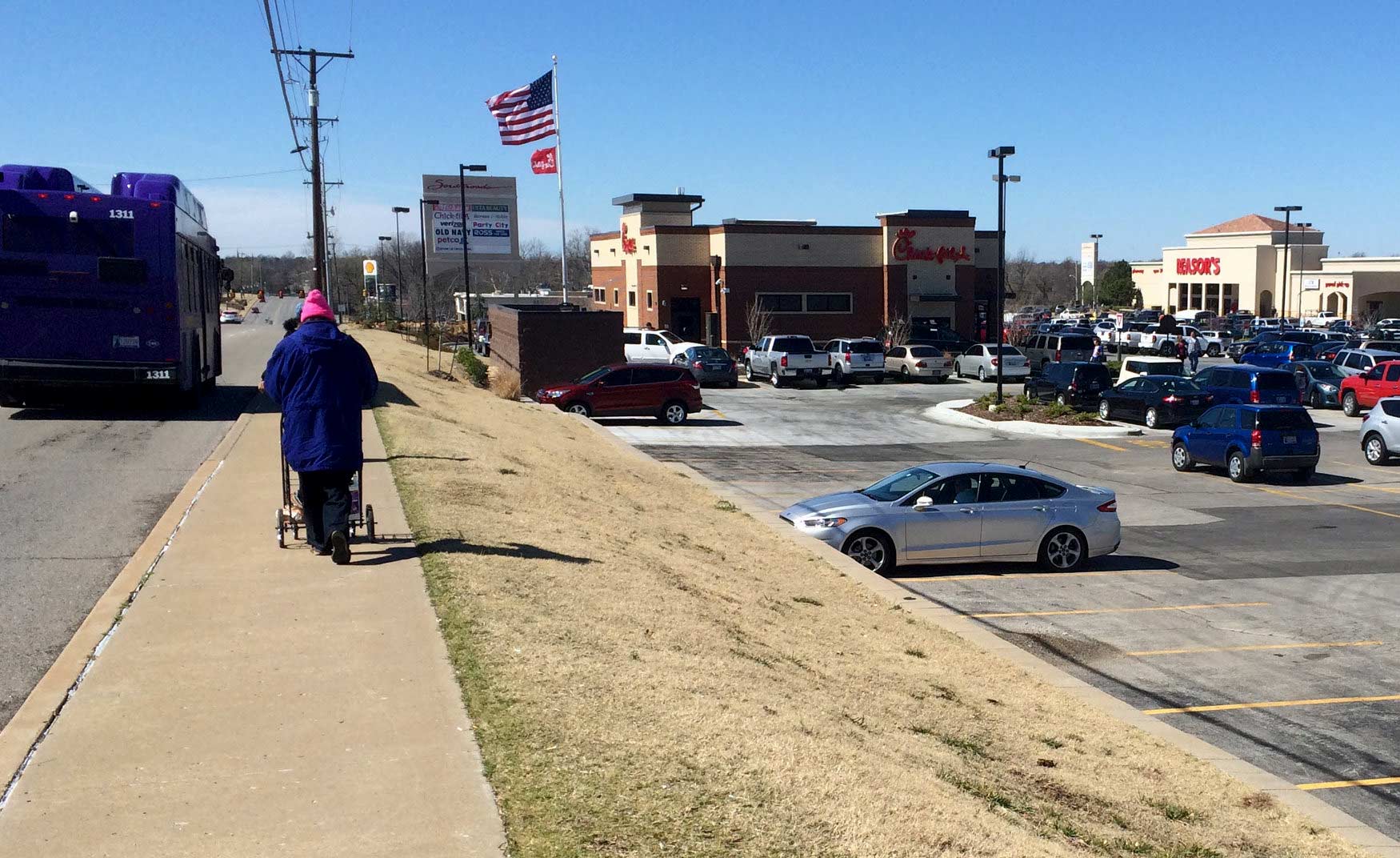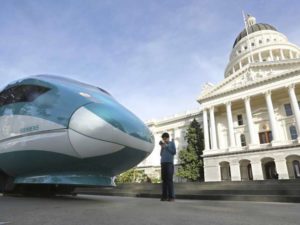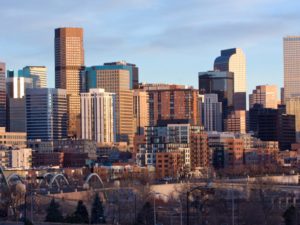
“Let’s say you glance inside your refrigerator and decide you need groceries. What does that trip to the grocery store look like?” writes Sarah Kobos for Strong Towns. “If you’re like many Americans, you probably just envisioned yourself getting in your car, driving to a shopping center, and parking on a large surface parking lot.” “So maybe you chose to go to the store, but did you really choose to drive? Or was it simply the default option, so ingrained in our way of life that it’s become second nature? If so, why is driving the default? What factors may have influenced your ‘decision?'” “The sad thing is that this decision was made for you long ago. In fact, your trip to the store is the culmination of thousands of other decisions, both large and small, made by total strangers over the past 80 years or so. And yet, most of us would be hard-pressed to name more than one or two of the many ordinances, policies and regulations that govern every aspect of how we physically interact with the city we call home.” “Although these regulations are basically invisible to the average citizen, the more you learn about them, the harder it is not to see their impact on your day-to-day life. Personally, I’m starting to feel like that guy in The Matrix who looks at the scrolling code on a computer screen and no longer sees the code, just ‘blonde, brunette, redhead.’ Except for me, it’s the opposite. I walk down a city street and instead of seeing shops, restaurants and houses, I see land use maps, parking requirements, subdivision regulations, landscaping ordinances, and street engineering standards.” “What people care about is quality of life. The trick is getting folks to understand the connection between quality of life, the built environment, and all those nitty-gritty rules and regulations that make up the invisible hand of city design. It’s important that average citizens talk about what they want for their city. It’s equally important that city leaders translate these desires into the ordinances and policies that govern how our cities evolve and grow.” “If average citizens don’t speak up, these boring regulations will invariably be written by the loudest people in the room: the big developers, real estate professionals, and construction lobbyists who know exactly what they want and how to get it. These are the folks who understand how rules and regulations influence city design—as well as their bottom line. It’s their job to show up at public meetings to ensure their viewpoint is heard. And while there are some truly visionary folks in the development industry, it’s been my experience that a vast majority want nothing more than complete preservation of the status quo. I suppose it’s understandable that businessmen want a predictable business climate, but it doesn’t necessarily mean they will advocate for what’s best for the future of the city or a majority of its citizens.” “I’m fascinated by how often a small minority of private interests are able to successfully overwhelm a public debate. Citizens will be surveyed, and a large majority will indicate a desire to have more choices—they want to walk and bike and use transit, but currently don’t feel they have safe and viable options. They love traditional neighborhoods, and want to see more places like those old main streets they love. It’s clear that they want options that aren’t being built.” “The simple answer is that you have to get involved… Pay attention, read up on best practices and be open to new ideas. Then get your hands on the documents that govern your city, so you can figure out how to make the ‘invisible hand’ of land use and transportation regulations work for you. And then, someday, when it’s time to head to the store, you’ll have a choice of how you want to get there.”
Post-WWII zoning basically segregated different types of “uses”—residential, office, commercial, industrial—from each other, resulting in an environment where the place you live is often quite distant from the places you need to go. Unfortunately, if you'd like to walk or bike, the nearest grocery store could be several miles away from your home. (Photo credit: Sarah Kobos / Strong Towns)
Post-WWII zoning basically segregated different types of “uses”—residential, office, commercial, industrial—from each other, resulting in an environment where the place you live is often quite distant from the places you need to go. Unfortunately, if you'd like to walk or bike, the nearest grocery store could be several miles away from your home. (Photo credit: Sarah Kobos / Strong Towns)

Preference surveys consistently indicate that people would like to see more places like this, but most zoning regulations make it illegal. (Photo credit: Sarah Kobos / Strong Towns)
Preference surveys consistently indicate that people would like to see more places like this, but most zoning regulations make it illegal. (Photo credit: Sarah Kobos / Strong Towns)







